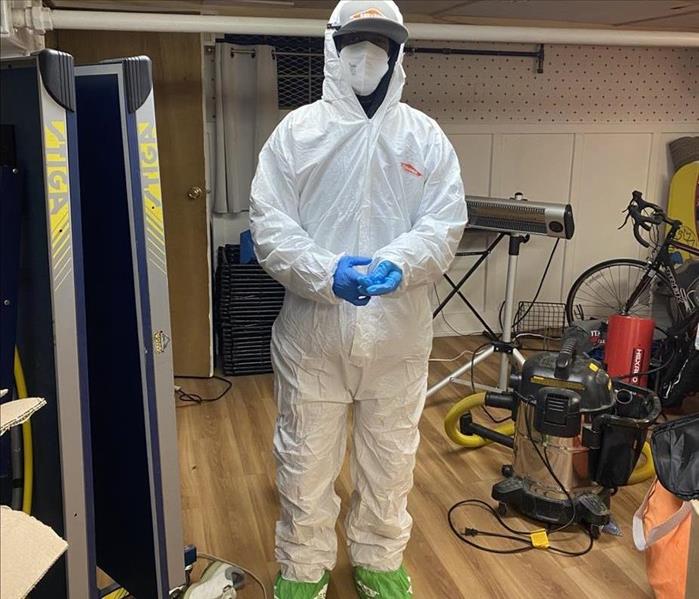The Importance of Personal Protection Equipment (PPE) in Restoration Work
6/24/2024 (Permalink)
The Importance of Personal Protection Equipment (PPE) in Restoration Work
When it comes to restoration work, particularly in environments affected by water damage, mold, fire residues, or hazardous materials, wearing Personal Protection Equipment (PPE) is not just a precaution—it’s a necessity. Here’s why PPE is crucial in ensuring both the safety of restoration professionals and the effective mitigation of damage:
1. Protection Against Contaminants: Restoration sites often harbor various contaminants such as mold spores, soot particles, asbestos fibers, or chemicals. PPE, including respirators, gloves, and coveralls, forms a barrier between workers and these harmful substances, reducing the risk of inhalation, skin contact, or ingestion.
2. Minimizing Health Risks: Exposure to contaminants found in restoration environments can lead to serious health issues over time. Respiratory problems, skin irritation, allergies, and even long-term illnesses are potential risks without proper PPE usage. By wearing appropriate protective gear, restoration professionals safeguard their health while executing their duties.
3. Compliance with Safety Standards: Adhering to safety regulations and industry standards is essential for restoration companies like SERVPRO®. PPE requirements are outlined to ensure workers’ safety and compliance with health and safety guidelines. This commitment not only protects employees but also demonstrates professionalism and responsibility in the field.
4. Handling Hazardous Materials: Restoration projects often involve handling hazardous materials like insulation containing asbestos or chemical residues from fires. PPE such as goggles, respirators with appropriate filters, and impermeable suits are crucial for minimizing exposure risks during cleanup and removal processes.
5. Preventing Cross-Contamination: Effective restoration involves preventing the spread of contaminants to unaffected areas. PPE plays a key role in this by reducing the likelihood of carrying contaminants on clothing or skin from one area to another, thereby maintaining clean zones and ensuring thorough mitigation.
When PPE is Necessary:
- Water Damage Restoration: Dealing with contaminated water or mold-infested materials.
- Fire Damage Restoration: Handling soot, ash, and potentially harmful residues.
- Mold Remediation: Working in areas with elevated mold spore concentrations.
- Biohazard Cleanup: Dealing with bodily fluids, chemicals, or other hazardous materials.
Conclusion:
In the restoration industry, prioritizing safety through the use of Personal Protection Equipment is non-negotiable. Whether mitigating water damage, addressing mold growth, or cleaning up after a fire, wearing PPE not only protects workers’ health but also ensures efficient and thorough restoration efforts. At SERVPRO, our commitment to safety includes equipping our teams with the necessary PPE to handle any restoration challenge professionally and responsibly. By following safety protocols and using PPE effectively, we maintain a safe working environment and deliver exceptional restoration services to our clients.
For more information on our safety practices and restoration services, contact SERVPRO today!
Stay safe and protect your health—choose SERVPRO for your restoration needs.





 24/7 Emergency Service
24/7 Emergency Service
